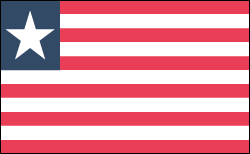Liberia History


A Military Coup Leads to the Disastrous Rule of Charles Taylor
Tolbert was ousted in a military coup on April 12, 1980, by Master Sgt. Samuel K. Doe, backed by the U.S. government. Doe's rule was characterized by corruption and brutality. A rebellion led by Charles Taylor, a former Doe aide, and the National Patriotic Front of Liberia (NPFL), started in Dec. 1989; the following year, Doe was assassinated. The Economic Community of West African States (ECOWAS) negotiated with the government and the rebel factions and attempted to restore order, but the civil war raged on. By April 1996, factional fighting by the country's warlords had destroyed any last vestige of normalcy and civil society. The civil war finally ended in 1997.
In what was considered by international observers to be a free election, Charles Taylor won 75% of the presidential vote in July 1997. The country had next to no health care system, and the capital was without electricity and running water. Taylor supported Sierra Leone's brutal Revolutionary United Front (RUF) in the hopes of toppling his neighbor's government and in exchange for diamonds, which enriched his personal coffers. As a consequence, the UN issued sanctions against Liberia.
In 2002, rebels—Liberians United for Reconciliation and Democracy (LURD)—intensified their attacks on Taylor's government. By June 2003, LURD and other rebel groups controlled two-thirds of the country. Finally, on Aug. 11, Taylor stepped down and went into exile in Nigeria. By the time he was exiled, Taylor had bankrupted his own country, siphoning off $100 million and leaving Liberia the world's poorest nation. Gyude Bryant, a businessman seen as a coalition builder, was selected by the various factions as the new president.







